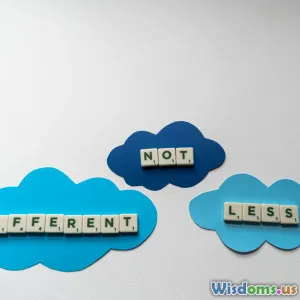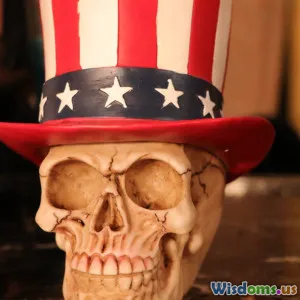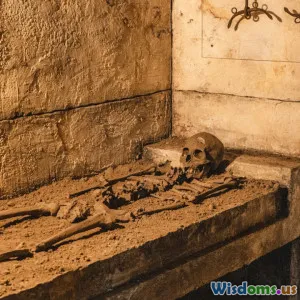
Inside Freemasons Rituals Myths Truths and What Really Happens
8 min read Explore the truths and myths behind Freemasons' rituals and uncover what really happens in their secretive ceremonies. (0 Reviews)
Inside Freemasons Rituals: Myths, Truths, and What Really Happens
Freemasonry is often cloaked in mystery, fueling numerous myths and conspiracy theories about secretive rituals and occult practices. But what actually occurs during Freemasons’ meetings? How much of the lore aligns with reality, and what is pure fiction? This in-depth exploration sheds light on the origins, rituals, symbolism, and truth behind Freemasonry’s traditions.
Origins and Purpose of Freemasonry
Founded formally in the early 18th century in England, Freemasonry traces its symbolic roots back to medieval stonemasons’ guilds. While legendary tales connect Freemasons to the builders of King Solomon's Temple, historical evidence suggests the fraternity evolved initially as a social and philanthropic organization. By promoting morality, personal development, and brotherly support, modern Freemasonry adopted elaborate rituals to teach ethical lessons.
Freemasonry's purposes include:
- Encouraging moral uprightness
- Promoting charity and community service
- Providing a structured environment for self-improvement
- Fostering brotherhood beyond social distinctions
Historical data indicate that by 1723, the "Constitutions of the Free-Masons" laid basic rules combining allegorical rituals with organizational governance. These early frameworks still influence today’s Masonic lodges worldwide.
The Structure and Degrees of Freemasonry
Freemasonry is divided into several degrees or levels, each symbolizing stages of personal and moral growth. The most common are the three craft degrees:
- Entered Apprentice – the candidate’s introduction to the fraternity and its teachings.
- Fellowcraft – a focus on knowledge and intellectual development.
- Master Mason – the culmination, symbolizing maturity and full membership.
Each degree features specific ceremonies rich in symbolism and allegory. These ceremonies help members internalize principles such as truth, justice, and charity.
Common Ritual Elements: What Really Happens
Contrary to sensational claims, Freemason rituals are not occult or sinister but symbolic dramatizations meant for reflection. Here are key components of a typical Masonic ceremony:
Initiation Ceremonies
Initiations involve instructive presentations teaching values through staged scenarios. Candidates participate in symbolic acts—being blindfolded (hoodwinked), or taking oaths meant to signify commitment to ethical life principles and confidentiality.
Use of Symbols and Tools
Tools such as the square, compass, level, and plumb rule are emblematic rather than practical. For example:
- Square: Symbolizes morality and fairness.
- Compass: Represents self-restraint.
- Level: Reminds members of equality.
These symbols provide meaningful aesthetic devices to reinforce the messages delivered in rituals.
Oaths and Obligations
While members swear oaths to keep certain ritual details confidential, these pledges are focused on respect and secrecy over mundane matters rather than sinister activities. The purpose is to build trust and solidarity.
Historian Robert L.D. Cooper notes: "The oaths are symbolic recognitions of trust expected in a brotherhood rather than diabolical allegiances."
Meeting Structure
Meetings typically commence with formal opening ceremonies followed by discussions, charitable planning, educational talks, and closing rituals. Any “secret” materials used are ritual scripts, not hidden knowledge with mystical power.
Myths and Misinformation Explored
Numerous myths surround Freemasonry’s rituals; some common ones include:
-
Myth: Freemasons practice occult magic or Satanism. There is no evidence supporting this; rituals are moral teachings.
-
Myth: Freemasons control governments and global finance. While many influential figures were Freemasons, the organization does not exert secret political control.
-
Myth: Rituals include human sacrifices or criminal acts. This is completely false; rituals are symbolic without violent or illegal conduct.
For example, the notorious "Skull and Bones" or “Illuminati” conspiracies are unrelated, but conflated due to widespread misunderstanding.
The Role of Secrecy
Secrecy has become a hallmark of Freemasonry, fueling intrigue. The reasons include:
- Preserving ritual integrity by avoiding public misinterpretation.
- Fostering exclusivity and trust among members.
This privacy doesn’t indicate wrongdoing; many traditions worldwide—from academic societies to religious rites—use confidentiality to maintain the sanctity of ceremonies.
The Social and Charitable Impact
Freemasonry isn’t just ritual—its lodges worldwide support myriad charitable causes. From funding hospitals, educational scholarships, disaster relief, to support for veterans, their philanthropic impact is substantial.
For example, the Shriners, an appendant Masonic group, operates a worldwide network of specialized hospitals for children.
Perspectives From Freemasons
Insights from actual Masons reveal pride in traditions that blend historical artistry with living ethical commitments. Brother John Smith, a 25-year Mason from New York, states:
“The rituals help us remind ourselves of lifelong virtues. The fraternity isn’t about secrets for power but living better as part of a global brotherhood.”
Conclusion: Demystifying Freemasons’ Rituals
Freemasonry’s rituals, shrouded in symbolism and conducted in private, have invited curiosity and suspicion for centuries. This article separates sensational myths from historical facts and observant realities:
- Rituals are theatrical, ethical teachings using symbols and oaths.
- No occult or nefarious behavior has credible backing.
- Freemasonry emphasizes personal growth, community service, and brotherly fraternity.
Understanding Freemasonry requires peeling back layers of myth and recognizing universal values portrayed infinitesimally through ceremonial tradition. Ultimately, these rituals are a vehicle for timeless human ideals—honor, truth, and charity—rather than hidden machinations.
The next time you hear whispers about secret handshakes or dark rites, remember: the Freemason ritual is more drama for self-betterment than clandestine power play.
References and further reading:
- "The Complete Idiot’s Guide to Freemasonry" – S. Hamill
- Robert L.D. Cooper, "Cracking the Freemason’s Code" (National Geographic)
- Official Grand Lodge websites provide insights on ritual transparency and community activities
By appreciating these disclosures, we honor the complexity and continuity of one of the world’s oldest fraternal organizations.
Rate the Post
User Reviews
Popular Posts




















